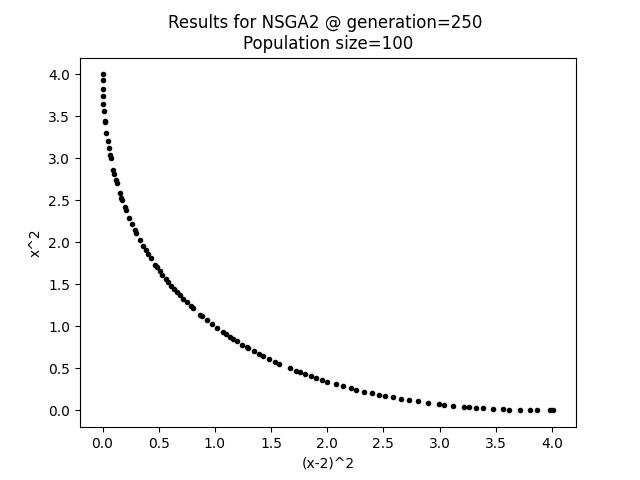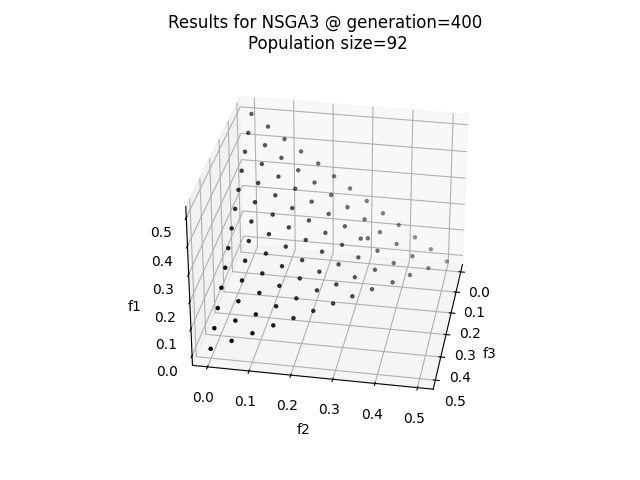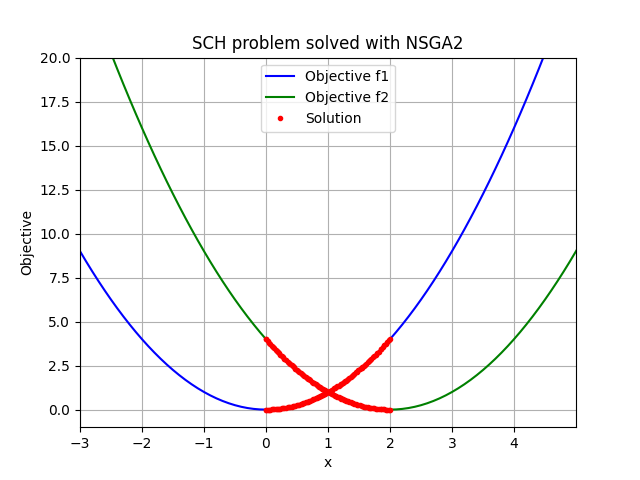# Optirustic
[](https://crates.io/crates/optirustic)
[](https://docs.rs/optirustic)


Optirustic is a framework written in Rust that provides algorithms and
analysis tool to solve multi-objective problems using multi-objective
evolutionary algorithms (MOEAs). It allows you to:
- define minimisation and maximisation problems with custom objective functions;
- define constraint and unconstrained variables (real, integer, boolean or choice);
- use multi-thread to evaluate objectives and constraints on population with many individuals
- export the population history as JSON and resume its evolution from file
- generate charts with the dedicated [Python package](https://pypi.org/project/optirustic/)
The library comes with the following
algorithms: [`NSGA2`](https://docs.rs/optirustic/latest/optirustic/algorithms/struct.NSGA2.html),
[`NSGA3`](https://docs.rs/optirustic/latest/optirustic/algorithms/struct.NSGA3.html) and
[`AdaptiveNSGA3`](https://docs.rs/optirustic/latest/optirustic/algorithms/struct.AdaptiveNSGA3.html).
The API documentation is available on [docs.rs](https://docs.rs/optirustic/).
Examples showcasing this library's features are available in
the [examples folder of this repository](examples/nsga2_sch.rs).
## Installing Optirustic
Optirustic is available on [crates.io](https://crates.io/crates/optirustic). The
recommended way to use it is to add a line into your Cargo.toml:
```toml
[dependencies]
optirustic = "*"
```
## Example
### Problem definition
In this example, we are going to solve the Schaffer’s problem with the `NSGA2` algorithm.
The problem aims to minimise the following 2 objectives:
- f1(x) = x2
- f2(x) = (x - 2)2
The problem has 1 variable (`x`) bounded to `-1000` and `1000`. The optional solution is expected
to lie in the `[0; 2]` range.
### Problem implementation
The problem is implemented below using the `SCHProblem` struct. When an algorithm runs,
it first generates a set of potential solutions for the problem variables (in this case `x`). It
then calculates the objectives (f1(x) and f2(x)) in the `Evaluator`
trait exposed by this library.
```rust
#[derive(Debug)]
pub struct SCHProblem;
impl SCHProblem {
/// Create the problem for the optimisation.
pub fn create() -> Result {
// define the objectives
let objectives = vec![
Objective::new("x^2", ObjectiveDirection::Minimise),
Objective::new("(x-2)^2", ObjectiveDirection::Minimise),
];
// define the variable
let variables = vec![VariableType::Real(BoundedNumber::new(
"x", -1000.0, 1000.0,
)?)];
// the problem has no constraints
let constraints = None;
let e = Box::new(SCHProblem);
Problem::new(objectives, variables, constraints, e)
}
/// The first objective function
pub fn f1(x: f64) -> f64 {
x.powi(2)
}
/// The second objective function
pub fn f2(x: f64) -> f64 {
(x - 2.0).powi(2)
}
}
// Implement the function to evaluate the objectives and constraints. The `evaluate`
// function below receives the individuals which contain the variables/solutions `x`
// proposed by the algorithm. The function must return the evaluated objectives and
// constraints in the `EvaluationResult` struct.
impl Evaluator for SCHProblem {
fn evaluate(&self, i: &Individual) -> Result> {
let x = i.get_variable_value("x")?.as_real()?;
let mut objectives = HashMap::new();
objectives.insert("x^2".to_string(), SCHProblem::f1(x));
objectives.insert("(x-2)^2".to_string(), SCHProblem::f2(x));
Ok(EvaluationResult {
constraints: None,
objectives,
})
}
}
```
(back to top)
### Setup and run the genetic algorithm
The code below set up the `NSGA2` algorithm with `100` individuals and will
stop when `250` population generations are reached.
```rust
...
fn main() -> Result<(), Box> {
// Setup the NSGA2 algorithm
let args = NSGA2Arg {
// use 100 individuals and stop the algorithm at 250 generations
number_of_individuals: 100,
stopping_condition: StoppingConditionType::MaxGeneration(MaxGeneration(250)),
// use default options for the SBX and PM operators
crossover_operator_options: None,
mutation_operator_options: None,
// no need to evaluate the objective in parallel
parallel: Some(false),
// do not export intermediate solutions
export_history: None,
resume_from_file: None,
// to reproduce results
seed: Some(10),
};
let mut algo = NSGA2::new(problem, args)?;
// run the algorithm
algo.run()?;
// Export serialised results at last generation
algo.save_to_json(&PathBuf::from("."), Some("SCH_2obj"))?;
Ok(())
}
```
The full example is available in the [examples folder of this repository](examples/nsga2_sch.rs) and can be
run using
> cargo run --example nsga2_sch --release
This is the serialised data exported by the
algorithm: [SCH_2obj_NSGA2_gen250.json](examples/results/SCH_2obj_NSGA2_gen250.json)
and these are the plotted solutions:
(back to top)
### Plotting and inspecting data
With the library, you can set
the [`export_history`](https://docs.rs/optirustic/latest/optirustic/algorithms/struct.NSGA2Arg.html#structfield.export_history)
option, to export serialised results as JSON files as the algorithm evolves, or
call [`save_to_json`](https://docs.rs/optirustic/latest/optirustic/algorithms/trait.Algorithm.html#method.save_to_json)
to export the results at the last population evolution.
This crate comes with a companion [Python package](./optirustic-py) to inspect the results
and easily plot the Pareto front or the algorithm convergence. This is how all the charts within
this README file were generated. Have a look at the `py` file in the [example folder](./examples).
# License
This project is licensed under the terms of the MIT license.



